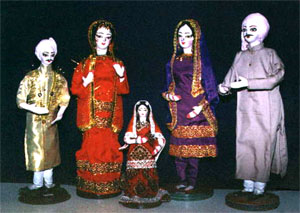
Pakistan has inherited a rich cultural heritage from its history which is as old as 7000-9000 years old. The imprints left by successive civilizations has left a a rich heritage of handicrafts. The different regions with wide variety of tradition and culture, dialects, folklore, music, dresses and costumes have much to offer to any connoisseur of handicrafts. The Kashmiri Shawls, the Balochi and Sindhi embroidery work, the Peshawari chappals (an indigenous shoe ware) and carpets, camel skin lamps of Multan, Gujrati pottery and the wood and brass work done in different parts of Pakistan have charm of their very own. The handicraft shops in major cities and hotels abound in the handicrafts of Pakistan, which are taken as souvenirs by the tourists from the world over. These specially include the handicrafts made of marble, camel skin, wood and ivory work and cane-basket work. In fact the handicrafts are the most striking expressions of the individuality of Pakistan's regional identities. The color, the shape or style of a craft item instantly evokes its region.
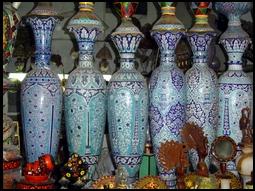
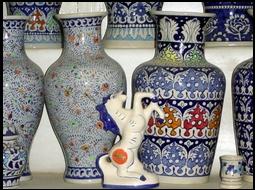
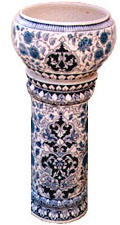
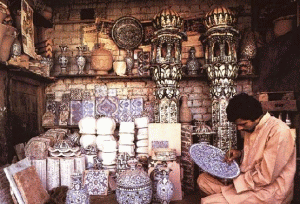
Multan, Bahawalpur and Hala are famous for the blue pottery made of special clay found in these areas. These are wrought by the inherited skill of artisans into paper-thin pottery noted for its elegance, delicacy of design and decorative patterns painted thereon.
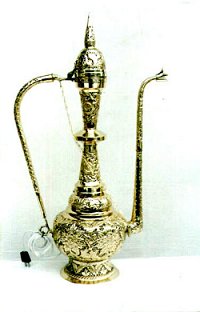
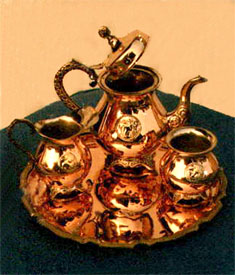
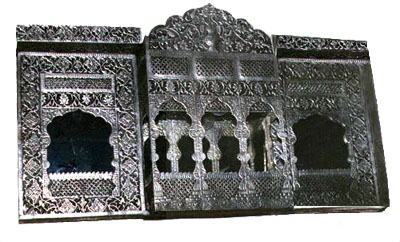
Brassware: "Aftaba" (left) - Tea Set (centre) - Brass Jharoka (right)
Brass utensils once used to be common in household uses, specially in the villages. Now these have slowly and gradually vanished due to their high cost, but brassware handicrafts can still be found displaying master craft of the artisans. They make decorative plates, vases, bowls and similar other things in exquisite designs reminiscent of the great Mughal period. Products of polished brass have their own appeal but it is the engraved work in colourful and artistic patterns that is most prized. In Peshawar, brass work is done on many things like household utensils of daily use to decoration pieces. In Hindko (one of the much spoken languages in NWFP), brass is called as "Mis," and the individuals who work on this metal are called "Misgar." In Peshawar a big market is allocated for this handicraft, known as, "Misgaran Bazaar," that means, bazaar of brass workers. People of NWFP give household utensils to their daughters in "Dowry," that are made of brass and are beautifully carved. These include water storage and cooking utensils.
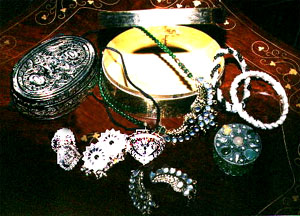
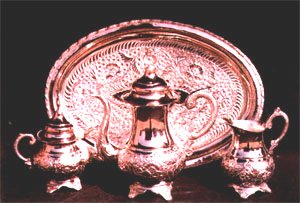
Silver jewellery (left) - Silver tea set (right)
Besides Brass, silverware is equally attractive and speak of craftsmanship. However because of their higher price range, these are generally ordered and found in a few places and shops,
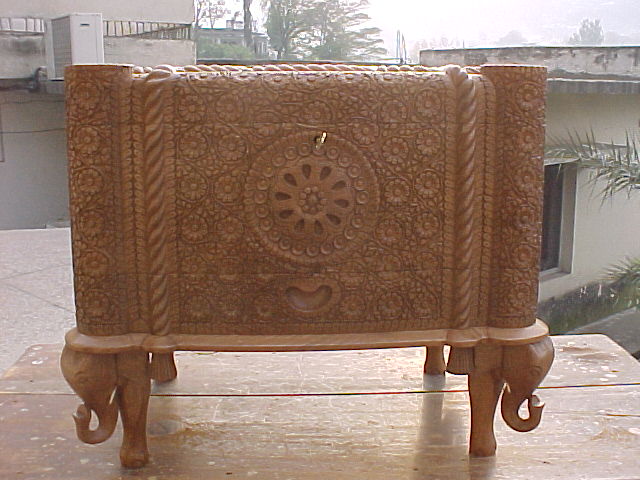
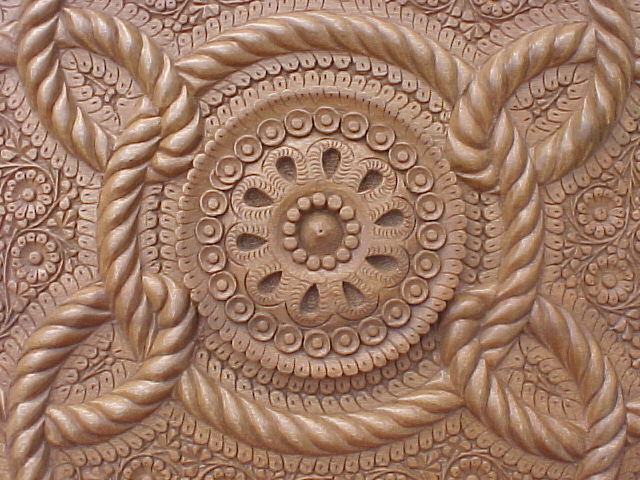
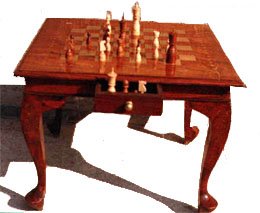
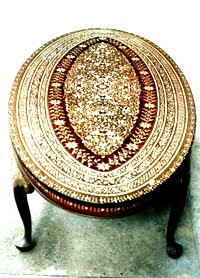
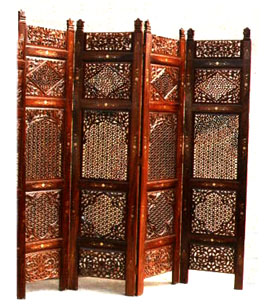
Chiniot and areas adjacent to Kashmir are famous for the exquisite carving in wood and woodcrafts inlaid with ivory, which are highly prized by tourists. Carving in ivory is a very specialized art requiring a high degree of skill and patient work on the part of the artisan. Caskets with delicate lace work ale highly prized. The present artisans have inherited the skill from gene-rations going far back into the past. The carved wooden furniture in wide range is exported in huge quantities because of its richness in design and high quality wood.
Cane Basket Work include stripped cane woven by skilled craftsmen to produce articles of utility such as baskets, hand bags, ladies bags, mats etc. in elegant designs decorated with floral patterns which make these articles coveted owing to their exquisite craftsmanship. In the northern areas and hill stations, the canes and the handicrafts made of cane are very famous among the tourists and holiday makers.
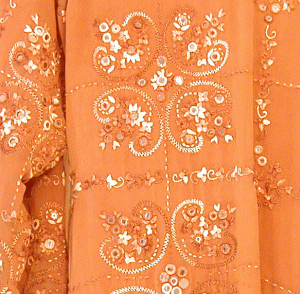
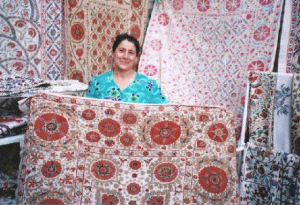
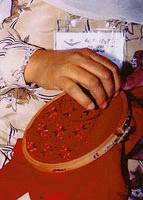
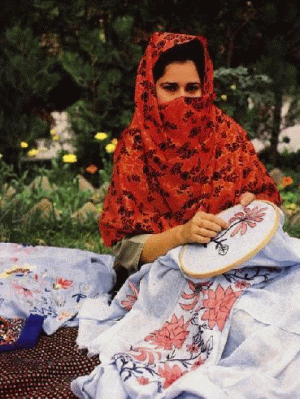
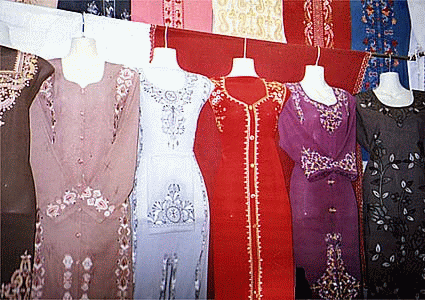
Embroidery is one of the most sought out handicrafts of Pakistan the world over. Multan, Bahawalpur and surrounding areas are full of gifted men and women who produce one of the most adorable cross stitch. "Tilla" work, Pearl work and "Salma Sitary" work of NWFP are very famous throughout the country. Swat is well-known due to thread embroidery, whereas, in D.G.Khan mirror work is done on clothes. Works of these types are called "Kadhai." Chitrali "Patti," that is woven on hand looms and Kadhai done on Chitrali Chugha is very famous.
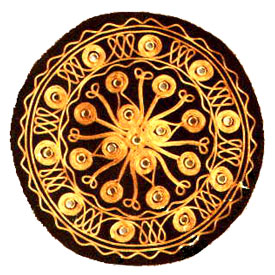
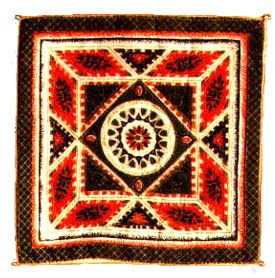
Embroidery looks equally eye catching and appealing on the hand made cushions
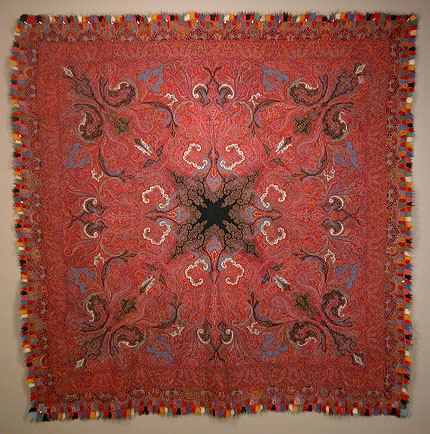
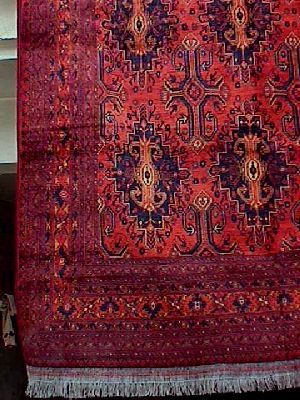
Pakistan is also world famous for its hand knotted carpets. Lahore and surrendering areas abound in small weavers who make “Chand Chauthai” carpets. These carpets have a density is 200 knots per square inch and are made of locally spun carpet wool - yarn and dyed fast with chrome dyes.
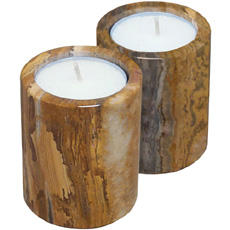
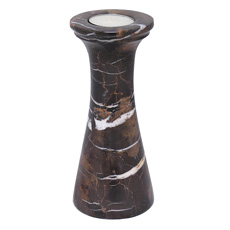
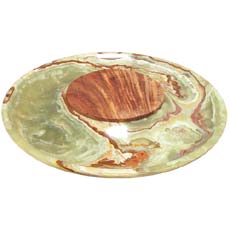
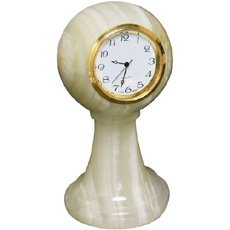
Onyx made Handicrafts: Candleholders - Cheese Platter - Desk Clock
Marble Carving generally come from Balochistan and NWFP. The utility articles of Balochistan include marble carved in decorative patterns, which represent a rare craftsmanship of the area; the skill having been passed on from generations to generations over a period in the past which would perhaps go back to the Palaeolithic age. The onyx made show pieces are really eye catching.

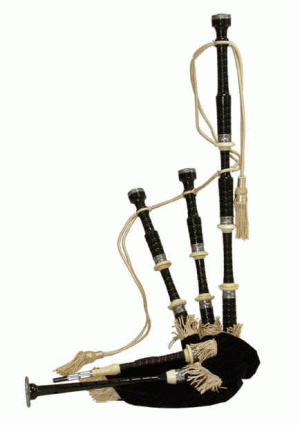
Sialkot is famous for predominately hand made sports goods based on indigenous raw materials. These sports good, specially the footballs have gained world-wide recognition since several decades. Besides sport good, Sialkot also boasts of its surgical goods and tableware which are also a class of their own. Sialkot also produces musical instruments including bagpipes which are exported to Scotland.
Camel-skin lamps and shades decorated in colourful floral patterns represent an ancient handicraft to meet the needs of today. Multan, the city of saints is famous for camel skin lamps, beside its exotic blue pottery.
In the year 2003, Pakistan's exports hit the US$ 10 billion mark, mainly because of its handicrafts and textile commodities, which certainly is only the beginning of a long journey of robust economic growth. This has been possible due to the committed efforts of our exporters, manufacturers, farmers and all other stakeholders. Pakistan did it despite the sanctions, 11th September, war-risk insurance, appreciation of rupee, travel restrictions, visa issues, financial liquidity constraints and slowdown of the world economic growth. On this historic occasion, the Pakistan Post issued a set of 21 commemorative stamps depicting all export oriented handicrafts and other textile and agro-based products.

No comments:
Post a Comment